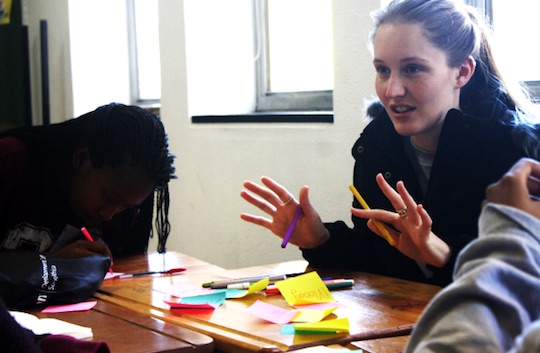Why Choose Blended Learning?

Text by Clint Clark
Blended learning is a hot topic in education right now. While the edtech world hasn’t yet agreed on a clear definition, at CodeSpace we take it to mean a combination of the best aspects of a classroom environment with the benefits of self-guided learning. In other words, we pluck the most effective parts of the learning process and toss the rest: no more waiting for a lecturer to finish explaining a topic you already understand, and no more struggling to comprehend a concept alone in your room. Failing happens quickly. Learning happens deeply.
Here are three reasons why CodeSpace prefers Blended Learning Environments:
ONE | It’s the best way to truly learn
At a typical CodeSpace class, you’ll find class time split evenly among three modes of learning: traditional lecturing, project-tutor time, and self-taught learning. For the first part of the class, students listen to a highly knowledgeable teacher; for the second, they put their skills to use on projects with the help of a tutor; for the last, they teach themselves new knowledge, to be reinforced and clarified by the teacher next time. This division is based on constructivist learning theory, an idea crystallized by the MIT professor Seymour Papert. It suggests that people learn best through producing tangible, sharable things – when they can forge connections across ideas, and when they actively make rather than become made by the teacher.
Blended learning at CodeSpace also aims to unleash people’s intrinsic motivation. The classroom structure takes inspiration from self-determination theory, a macro theory of human motivation developed by Professors Edward Deci and Richard Ryan in the 1970s, which proposes all humans have basic psychological needs for Competence, Autonomy and Relatedness. We want to master the environment and outcome, feel in control of our actions, and connect with other people. The teacher-tutor-self learning format opens opportunities for students to meet their psychological needs for autonomy (teaching themselves), relatedness (interacting with students, tutors, and teachers) and competence (mastering knowledge through active making).
TWO | It’s cost-effective
By paying skilled teachers for only one third of instructional time, CodeSpace cuts costs not only for the organisation but for students from low-income backgrounds. Plus, since all of the instructional time happens in the classroom, students don’t need access to laptops at home. This lowers fees and gives more students the opportunity to learn to code.
THREE | It prepares students for the workforce
In today’s tech industry, it’s common for developers to continually learn on the job. The popularity of programming languages is always in flux, so software engineers will likely teach themselves new programming languages throughout their careers. CodeSpace aims to instill in students the skills to teach themselves. By supporting autodidactic learning, CodeSpace is also supporting their future job prospects.